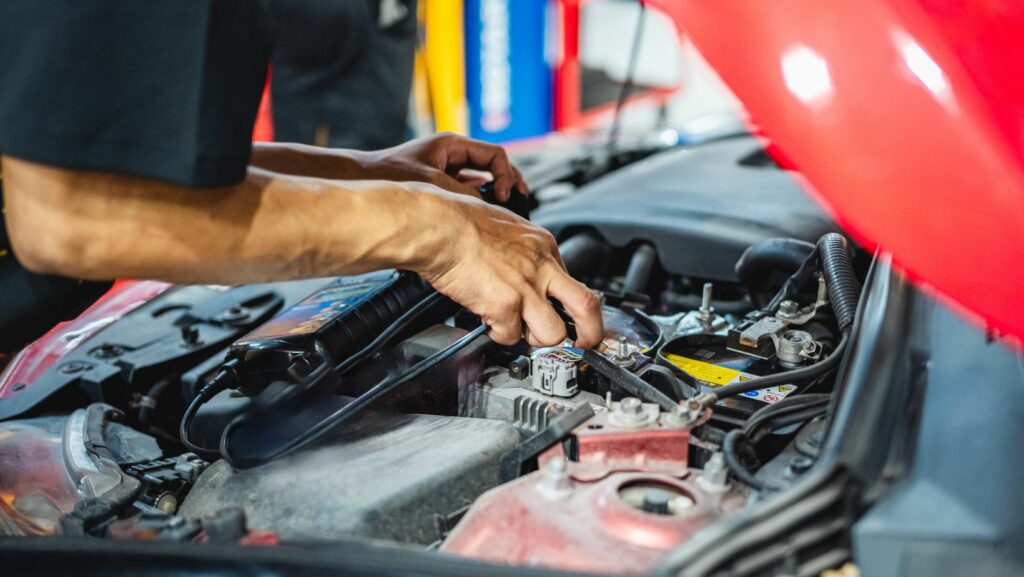Vehicle maintenance has experienced an incredible transformation in the last decade. The days of flipping through grease-stained paper manuals in your garage are quickly fading into memory.
The availability of digital repair manuals has revolutionized how both amateur DIYers and professional mechanics approach vehicle maintenance, making complex repair processes more accessible than ever before.
The Transformation from Paper to Pixels
For decades, printed repair manuals were the gold standard for vehicle maintenance.
Haynes and Chilton manuals lined garage shelves everywhere, their pages spotted with oil and worn edges serving as badges of honor from countless repair jobs. While these books served an important purpose, they came with significant limitations.
Printed manuals quickly became outdated as manufacturers issued technical service bulletins and updates. Storage was another problem.
A serious professional mechanic or automotive enthusiast could easily accumulate dozens of thick manuals, consuming valuable garage space.
Finding specific information meant flipping through hundreds of pages, often with greasy hands.
The digital transition solved these problems practically overnight.
Today, online repair manuals provide instant access to factory-grade information without the physical clutter or outdated content of their predecessors.
How Platforms Like eManualOnline Are Changing the Game
Modern digital manual platforms have transformed the landscape by centralizing factory service information and making it instantly searchable.
Information repositories like emanualonline compile official manufacturer data and detailed step-by-step repair procedures, presenting this information in easily navigable formats.
The technology behind these platforms is impressive. They provide official factory service manuals—the same ones used by dealership technicians, in searchable digital formats.
This means you’re getting the exact specifications, precise torque settings, and step-by-step procedures that professionals rely on, rather than simplified or generic information.
Key Features That Make Digital Manuals Superior
Instant Search Functionality
No more checking indexes and flipping pages, you can search for specific parts or error codes directly. Need the fuel pump relay location? Type it in and get answers within seconds, complete with diagrams and specifications.
Complete Factory Information
Manufacturers produce comprehensive repair manuals with detailed procedures. Digital platforms make these complete factory manuals available, ensuring you always have accurate, manufacturer-approved information.
Multi-Device Accessibility
View your manual on your phone while under the hood, on your tablet in the garage, or on your computer when planning a repair. This flexibility means you can access information whenever and wherever you need it.
Space Efficiency
One digital manual purchase can replace an entire bookshelf of printed manuals. This represents huge space savings for hobbyists who work on multiple vehicles or professionals who service different makes and models.
Practical Benefits for Different Users
For DIY Mechanics
Digital manuals are incredibly valuable for home mechanics. Step-by-step instructions, clear photographs, and detailed wiring diagrams make complicated tasks manageable.
Resources like eManualOnline give users the confidence to handle repairs that would otherwise cost hundreds at the dealership.
Consider replacing a timing belt—a job requiring careful attention to detail, specific component removal order, particular torque sequences, and precise timing. A digital manual provides:
- Component-specific torque specifications
- Clear timing mark diagrams
- Step-by-step disassembly procedures
- Special tool requirements
- Estimated labor times
This level of detail helps you determine whether to tackle the job yourself or refer it to a professional, saving money either way.
For Professional Technicians
Professional shops aren’t exempt from these benefits. While most possess factory scan tools, having additional digital resources provides backup information and alternative perspectives on difficult repairs.

The ability to quickly access multiple vehicle systems during diagnostic work improves both efficiency and accuracy.
The Cost Advantage
Printed factory service manuals can range from $100-$300 per vehicle. Digital manuals covering thousands of vehicles are available at a fraction of that cost per vehicle.
The math is compelling for anyone working on more than one vehicle, whether professionally or as a hobby.
Beyond the purchase price, digital manuals save money by reducing errors.
Correct torque specifications, proper procedures, and accurate troubleshooting instructions minimize the risk of component damage or missed steps that could lead to comebacks or safety issues.
Environmental and Practical Considerations
The environmental impact deserves mention as well. Digital formats eliminate paper waste, reduce transportation emissions, and remove the need for eventual disposal of outdated printed materials.
They also eliminate the frustration of opening a manual only to discover it covers model years 2010-2015 when you’re working on a 2016.
Looking Forward
Digital repair resources will continue to grow more sophisticated. Augmented reality integration, video demonstrations, and AI-assisted diagnostics are already emerging.
The foundation provided by current platforms ensures that anyone willing to learn can access vehicle maintenance information.
The shift to digital manuals isn’t just about convenience, it’s about democratizing vehicle repair knowledge, making professional-level information accessible to anyone with an internet connection.

